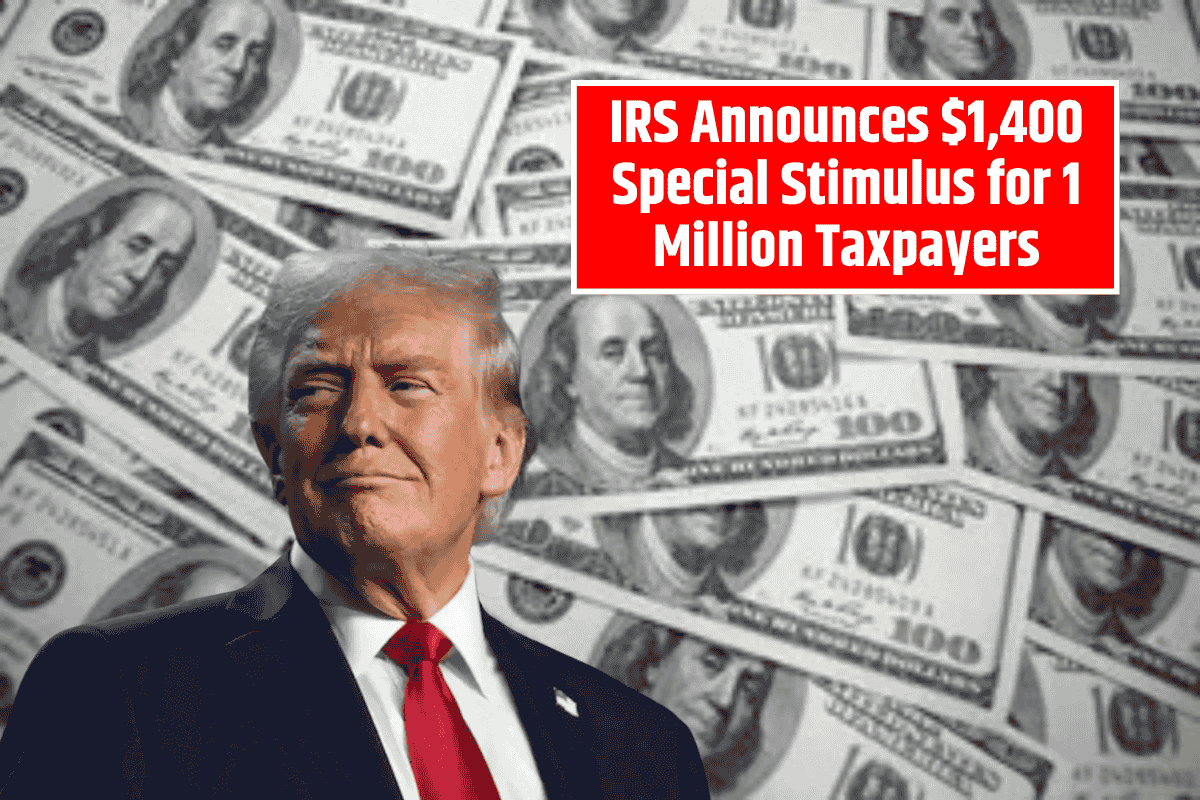The IRS has announced a special $1,400 stimulus payment to assist 1 million taxpayers who missed out on claiming their Recovery Rebate Credit (RRC) in 2021. This initiative is aimed at ensuring that eligible individuals receive the financial relief they missed due to incomplete or incorrect tax filings.
The payment will be issued automatically to eligible taxpayers, and those who haven’t filed a 2021 tax return have until April 15, 2025, to do so and claim the credit. Here’s everything you need to know about how to check eligibility, payment methods, and what actions you need to take if you’re a non-filer.
What Is the $1,400 Special Stimulus Payment?
The $1,400 special stimulus payment is designed to provide financial relief to taxpayers who did not claim their Recovery Rebate Credit on their 2021 tax returns. This credit was part of the government’s COVID-19 relief efforts, offering up to $1,400 to eligible individuals.
For many people, this payment was missed due to errors in their filings or lack of knowledge about the credit. The IRS is now working to issue these payments automatically to correct this and ensure that individuals receive the relief they are entitled to.
Who Is Eligible for the $1,400 Special Stimulus Payment?
There are two main groups of people who may be eligible for the $1,400 special stimulus payment:
1. Taxpayers Who Filed a 2021 Tax Return But Missed the Recovery Rebate Credit
If you filed your 2021 tax return but failed to claim the Recovery Rebate Credit, you could still qualify for this payment. Common reasons people missed the credit include incorrect entries or skipping over the relevant section when filing. The IRS will automatically issue the payment to those who meet this criterion.
2. Non-Filers
Even if you didn’t file a tax return for 2021 because of low or no income, you may still be eligible for the $1,400 payment. The IRS encourages non-filers to submit their 2021 tax return by April 15, 2025, in order to claim this credit. The IRS offers free resources to help simplify the filing process for individuals with minimal income.
3. Income Thresholds
Eligibility for the full $1,400 payment is also dependent on income limits. Here are the income thresholds:
Single filers: Adjusted Gross Income (AGI) under $75,000
Married filing jointly: AGI under $150,000
Head of household: AGI under $112,500
For individuals who exceed these income limits, partial payments may be available based on a sliding scale.
How Will the Special Stimulus Payments Be Distributed?
The IRS has outlined a simple distribution process to ensure that eligible individuals receive their payments quickly:
1. Automatic Payments
For most eligible individuals, no action is required. The IRS will automatically issue the $1,400 stimulus payment to the bank account associated with your most recent tax return or send a paper check to the address on file. These payments will begin in December 2024, with most taxpayers receiving them by January 2025.
2. Notification Letters
Once payments are sent, the IRS will mail a letter to recipients detailing the amount issued, how it was calculated, and instructions if there are any discrepancies. This letter is important for your records and to ensure transparency in the process.
What Should Non-Filers Do?
If you didn’t file a 2021 tax return, it’s still possible to claim the Recovery Rebate Credit and receive the special stimulus payment. Here’s what you need to do:
1. Gather Your Information
Start by collecting any relevant financial records, such as W-2s, 1099s, or other documents related to your income.
2. File a 2021 Tax Return
You can file a 2021 tax return using tax preparation software or with the help of a licensed tax preparer. Be sure to complete the section to claim the Recovery Rebate Credit, which will allow you to receive the $1,400 payment.
3. Monitor Your Payment
Once your return is processed, the IRS will issue your payment within a few weeks. You can track the status of your payment using the IRS’s Get My Payment Tool.
The $1,400 special stimulus payment is an important opportunity for taxpayers who missed out on the 2021 Recovery Rebate Credit. The IRS has made it easier than ever for eligible individuals to receive this relief through automatic payments, and non-filers have until April 15, 2025, to file their 2021 tax returns and claim the credit.
If you think you may be eligible, don’t wait to take action—file your return and secure your payment today.
